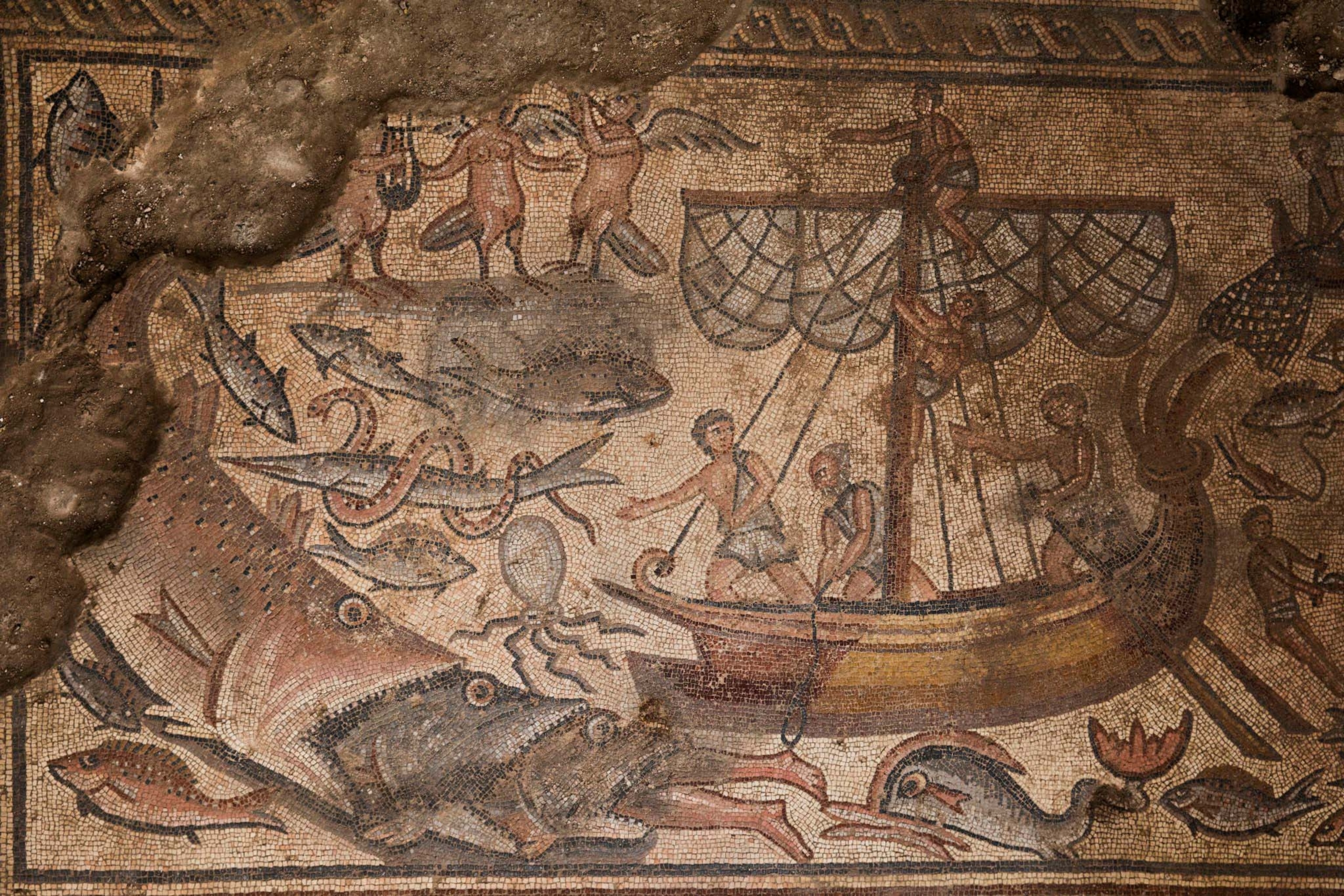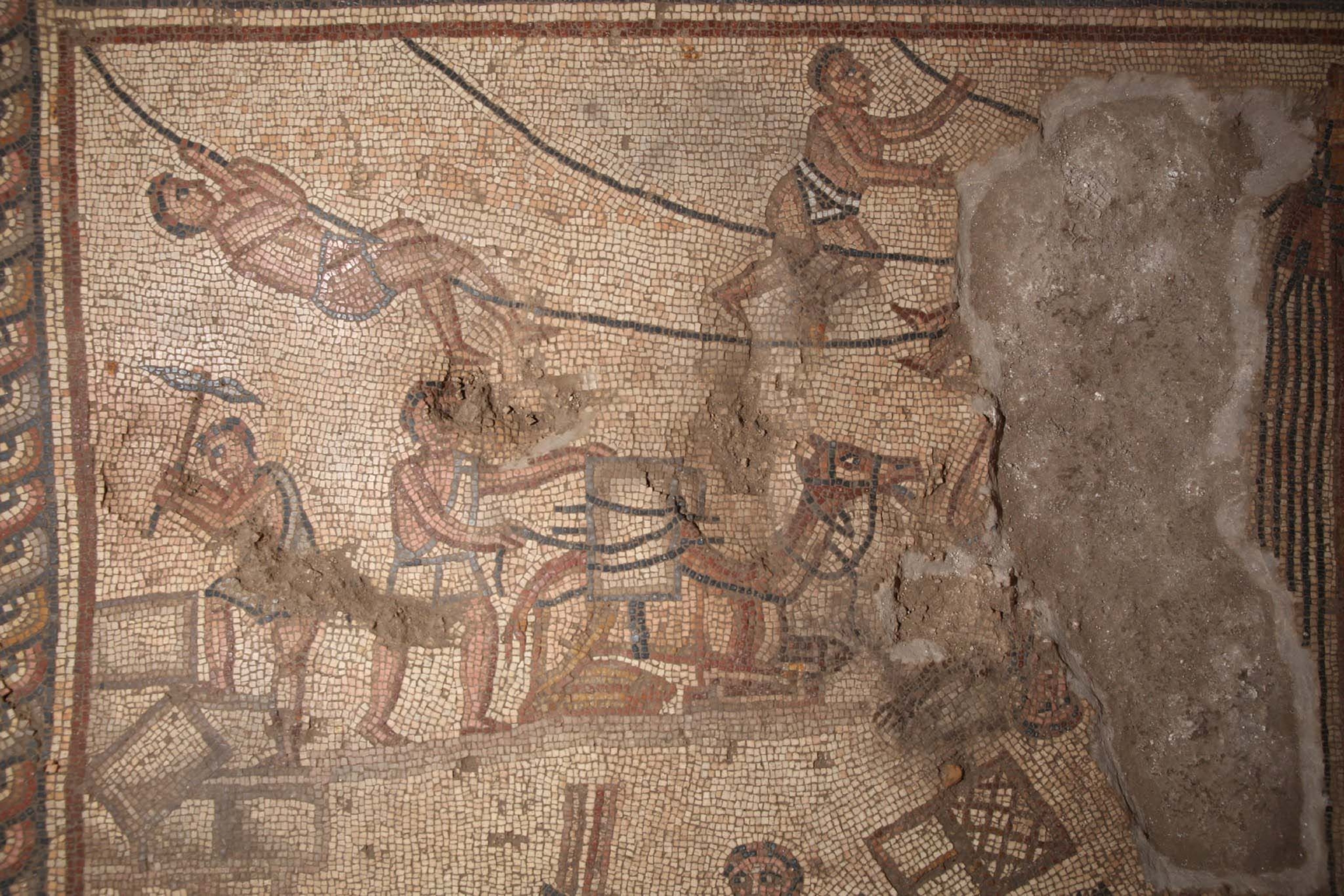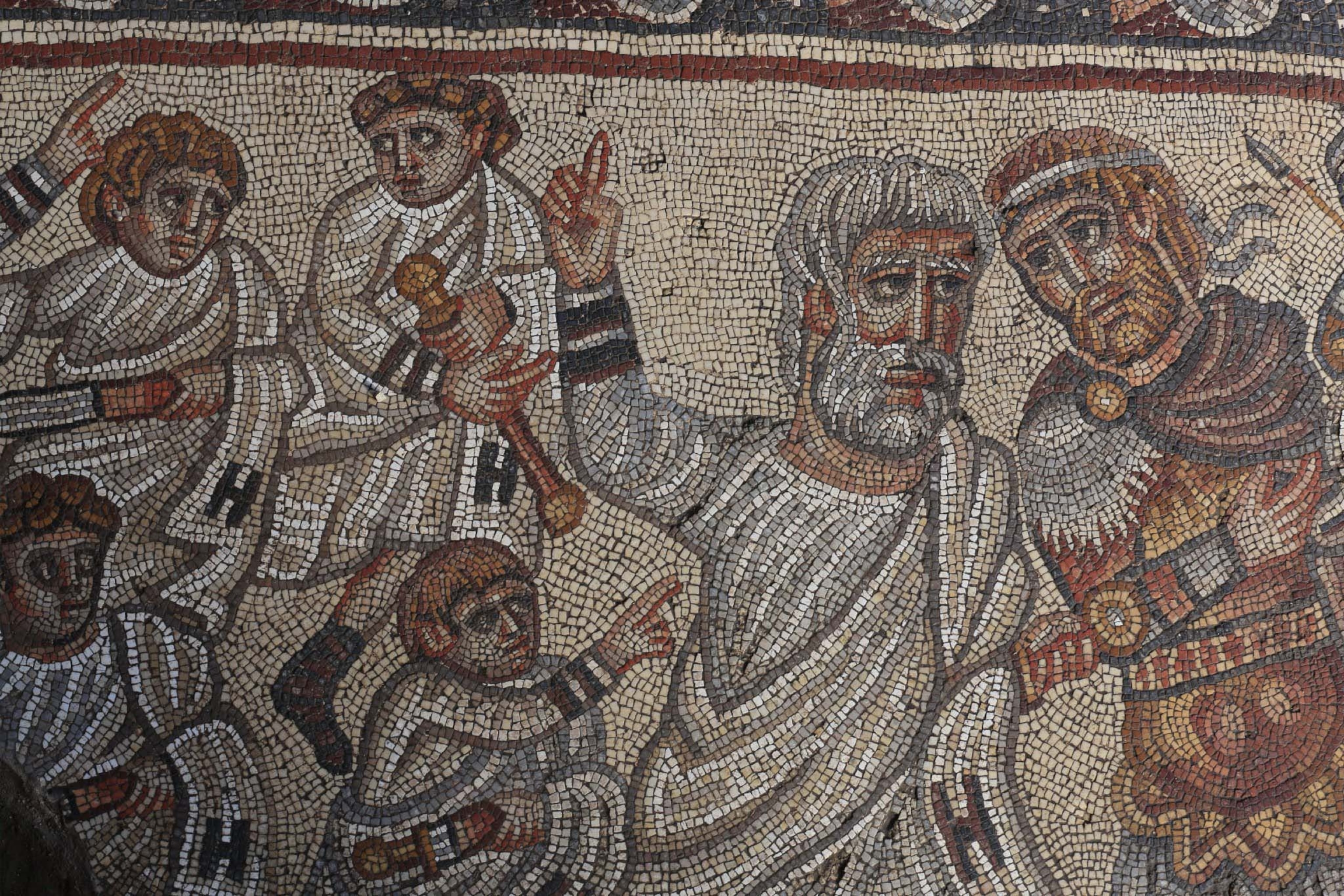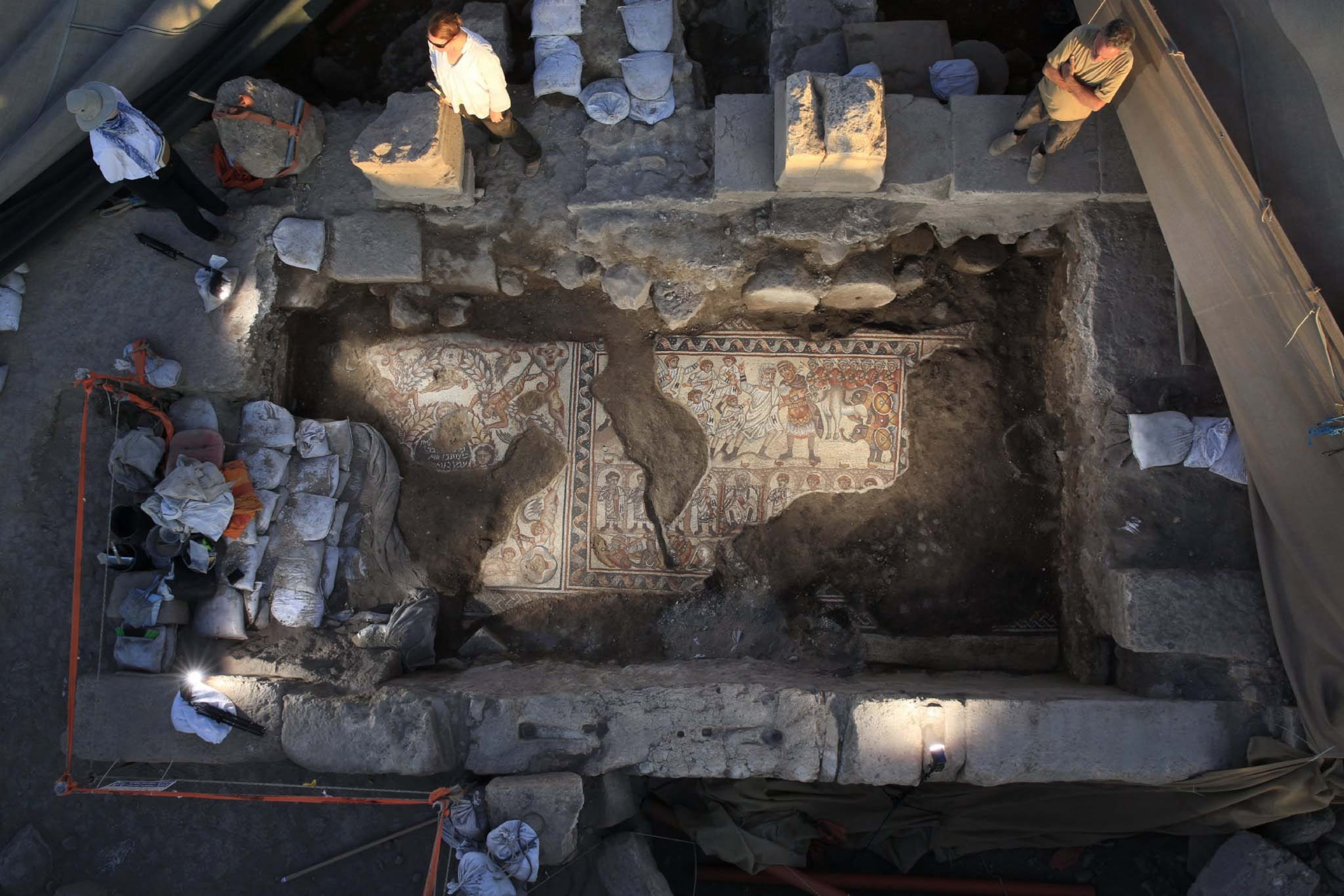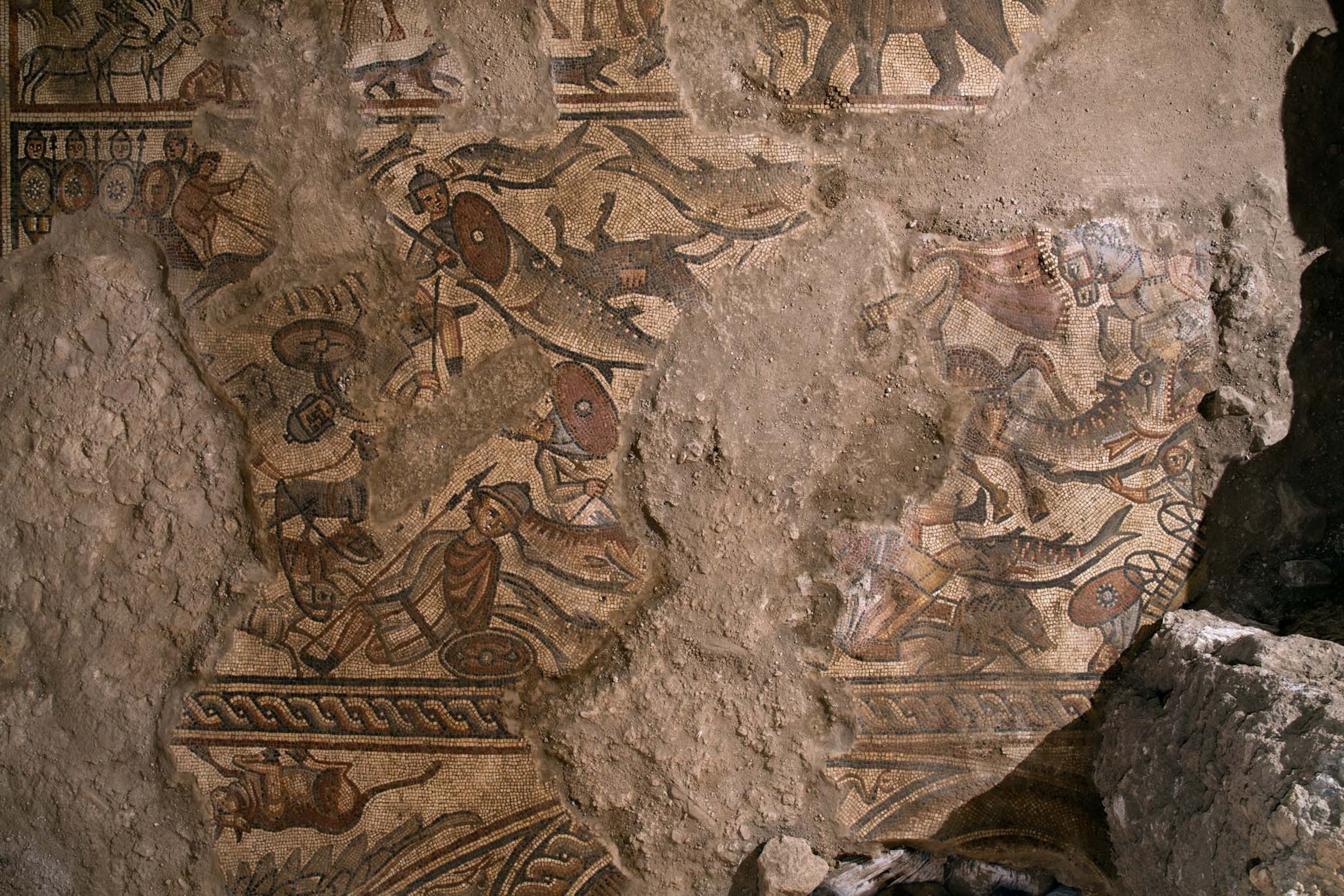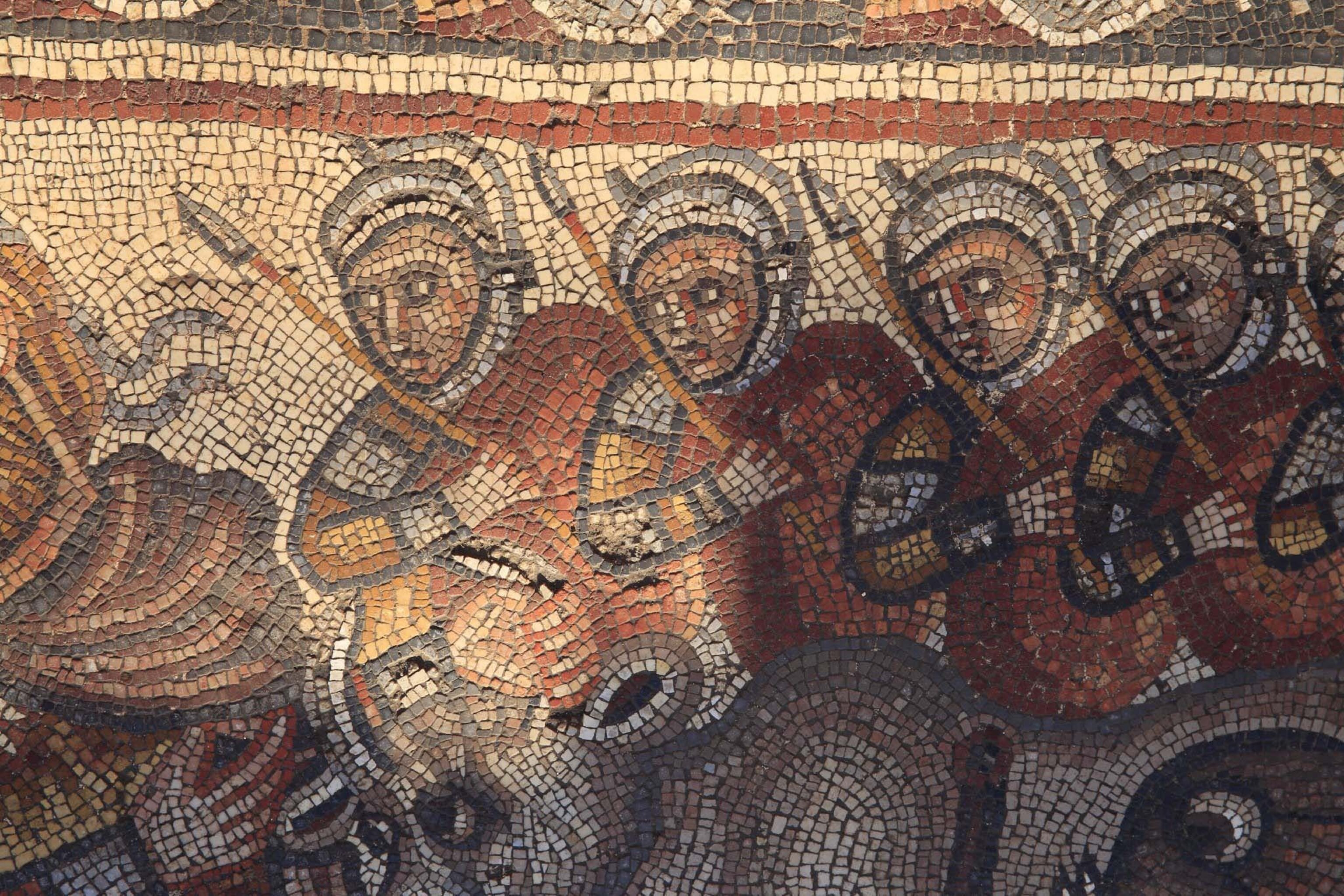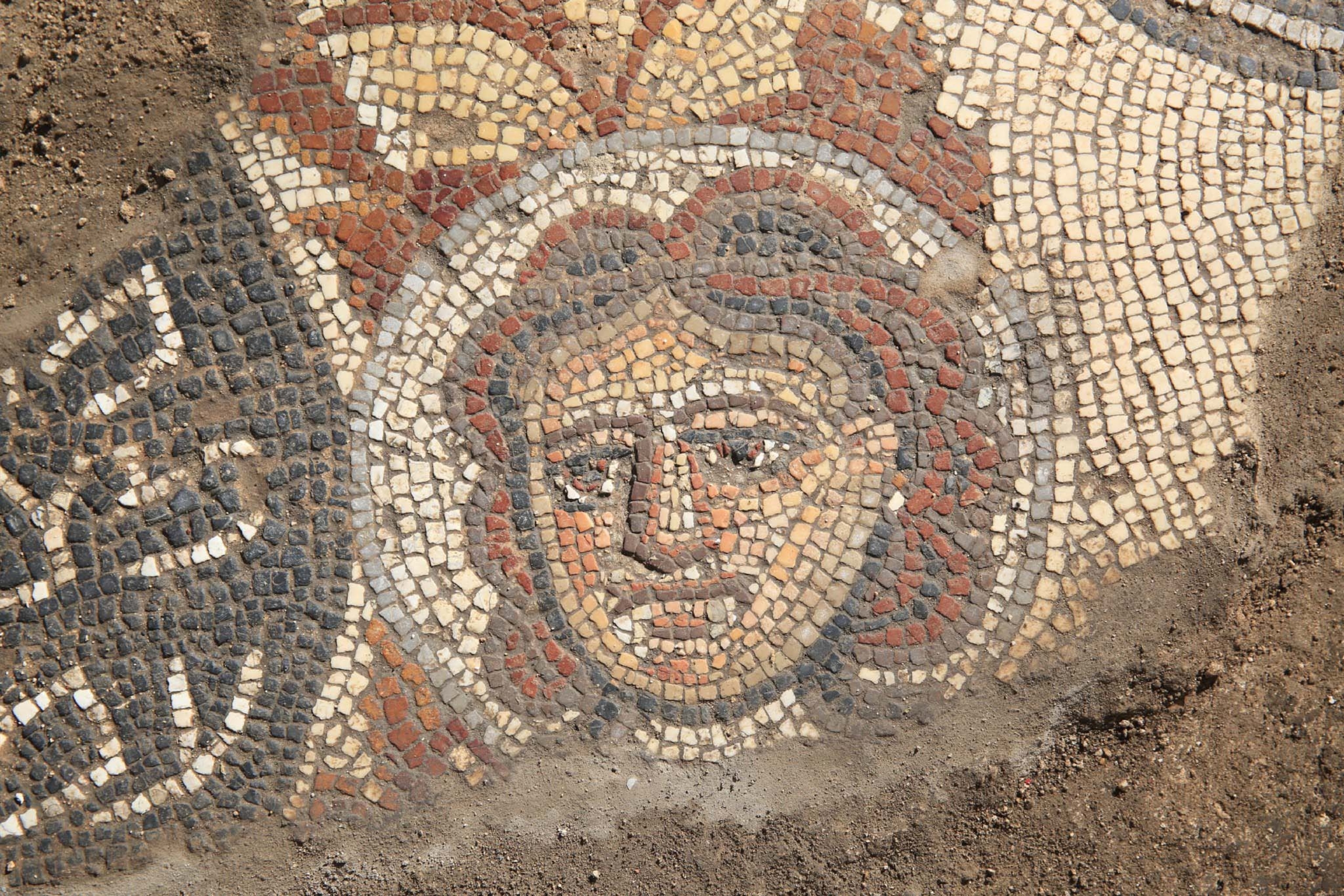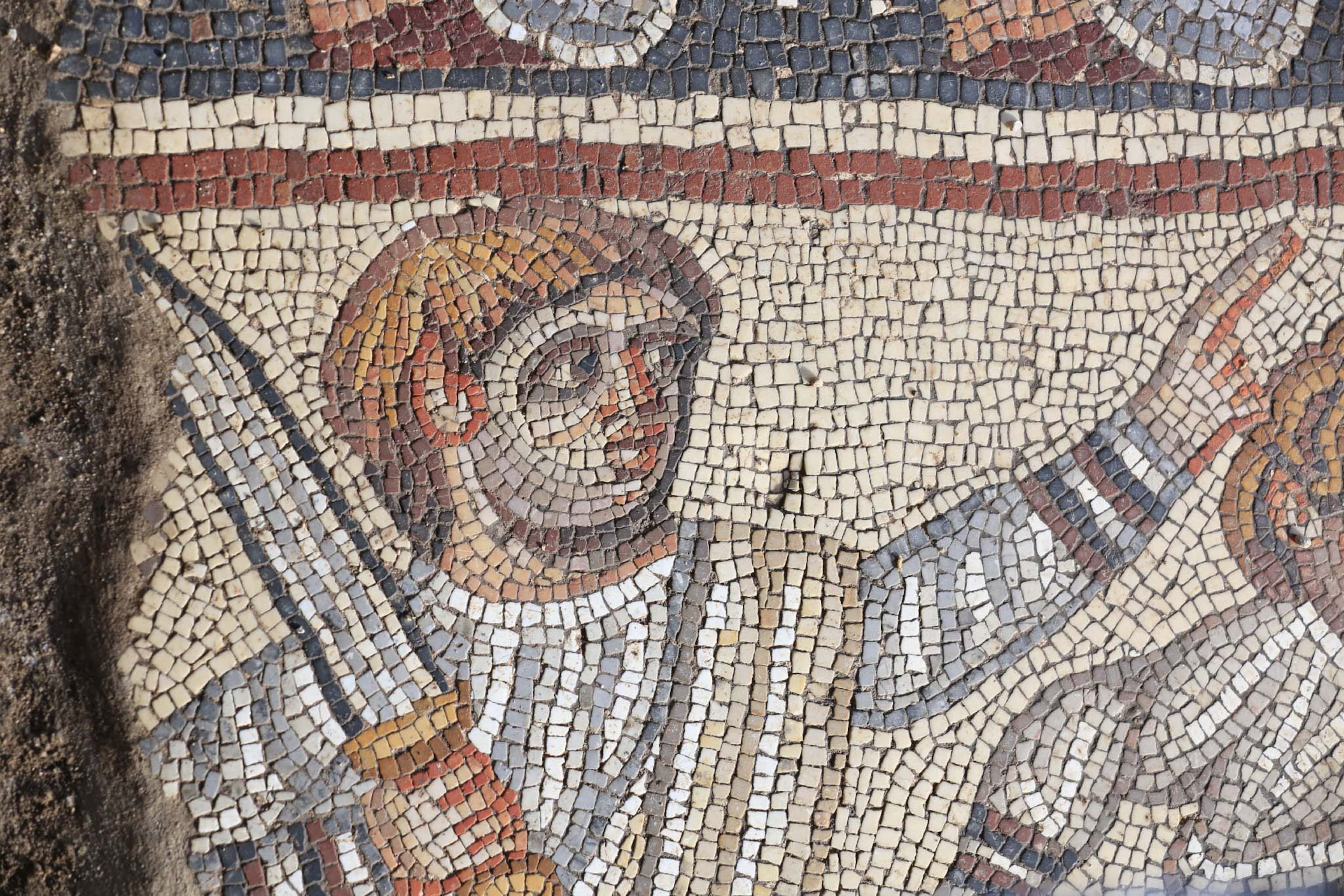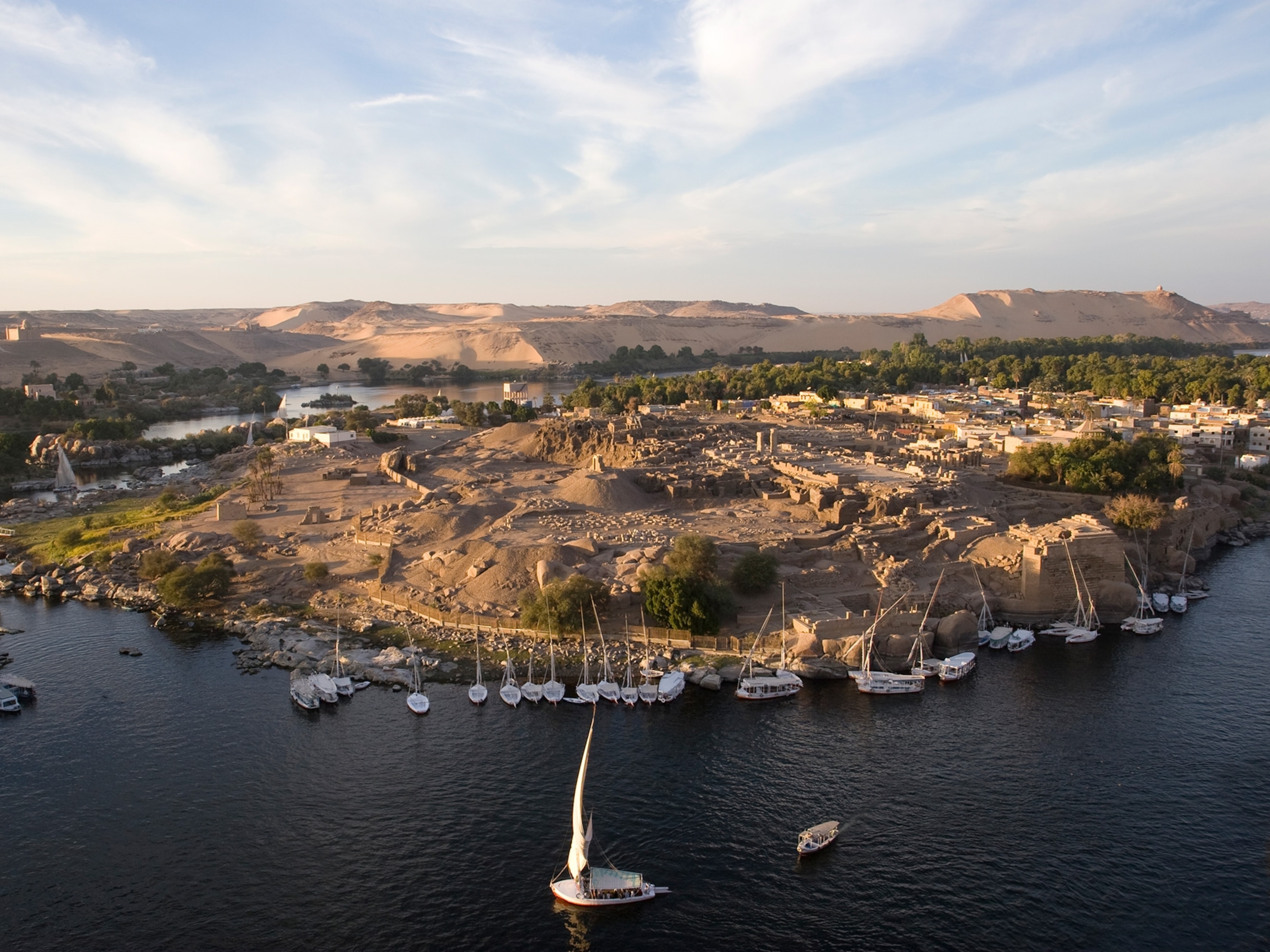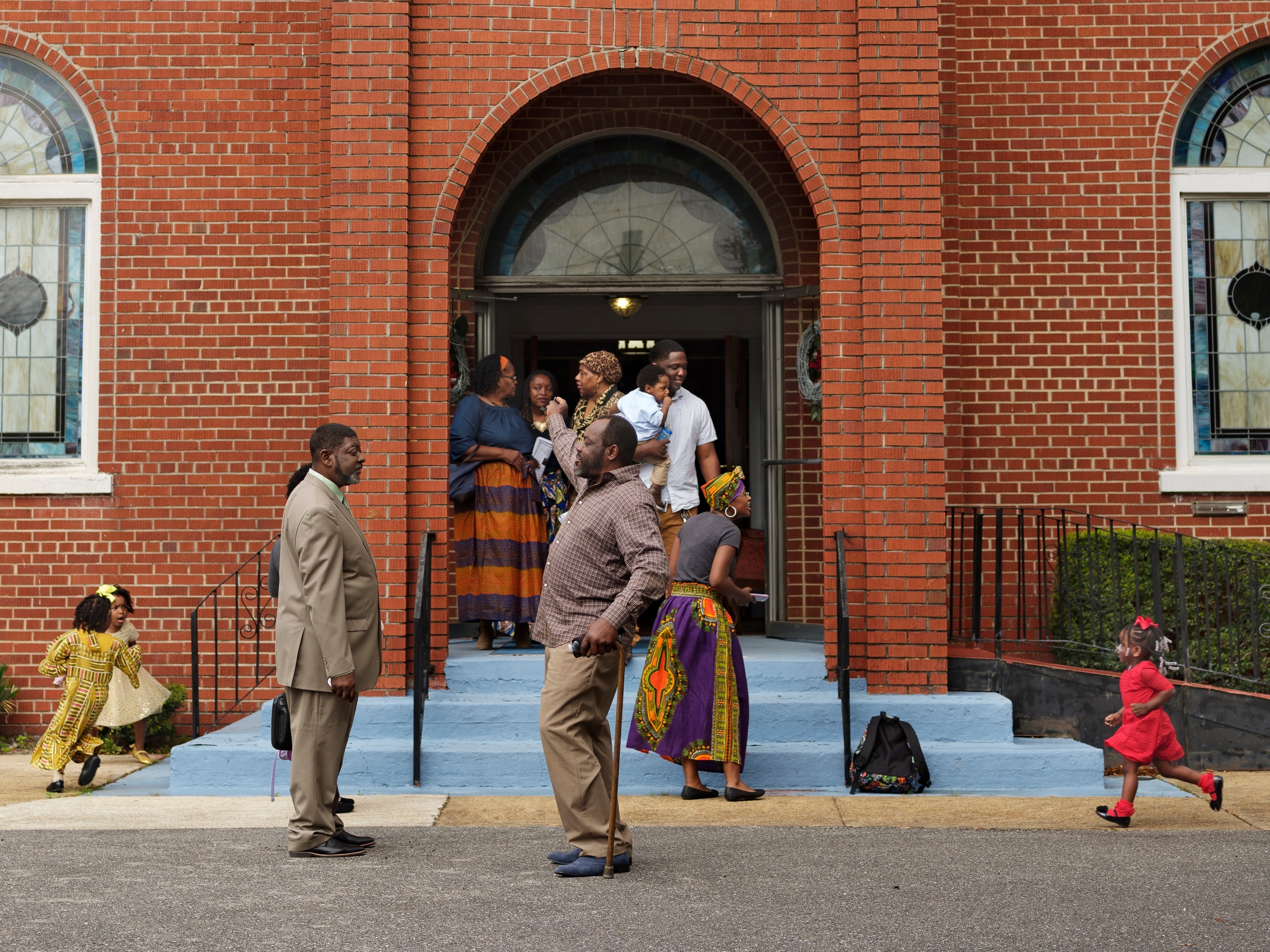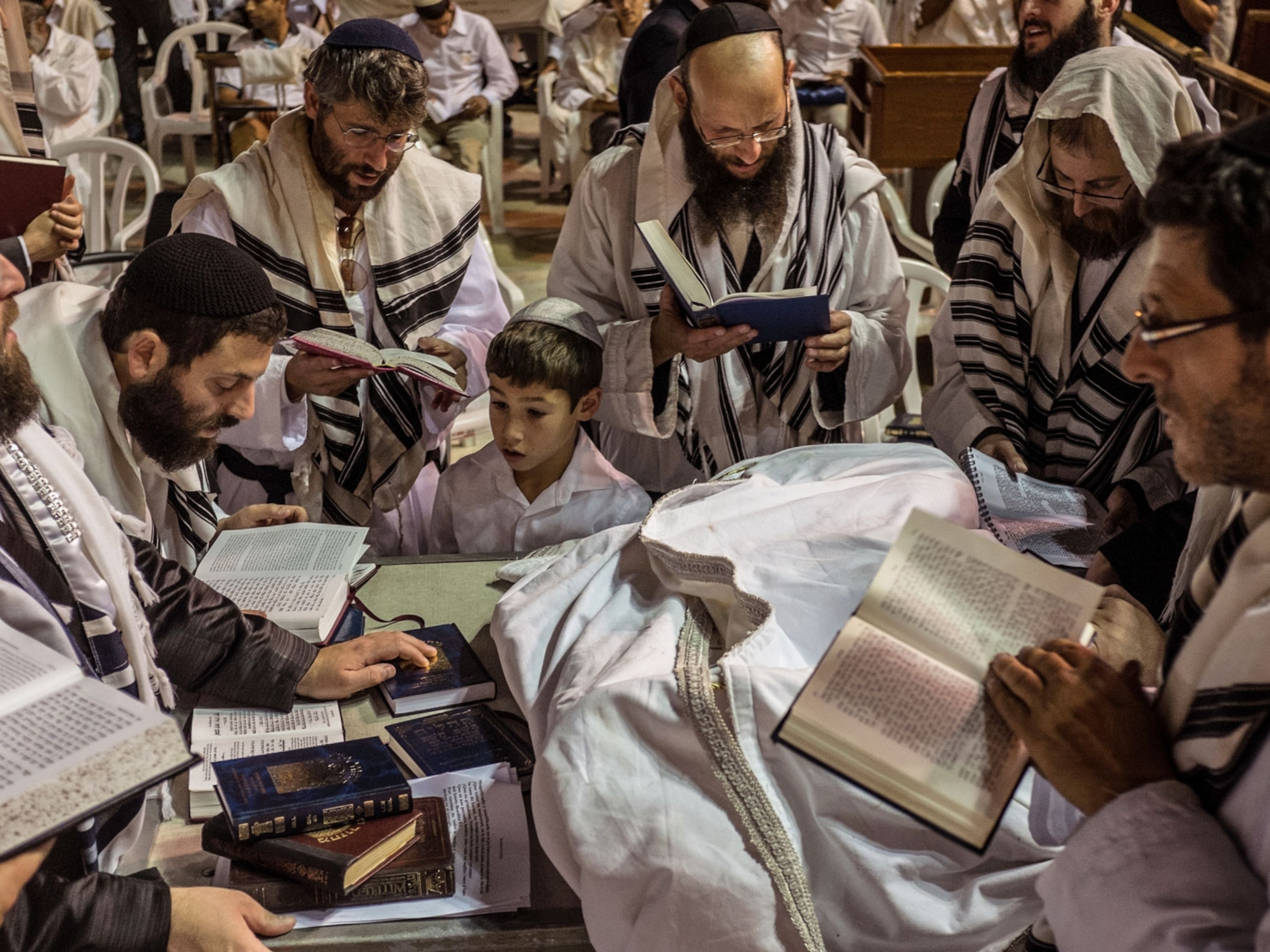More stunning scenes have been uncovered at the site of a fifth-century synagogue in Israel, where archaeologists have been excavating an ornate mosaic floor since 2012.
The discoveries at Huqoq, a site three miles west of the Sea of Galilee, are especially striking due to the unusual subject matter depicted on the floor of the synagogue, says excavation director Jodi Magness of UNC Chapel Hill.
Along with images from biblical stories such as Noah’s Ark, Moses’ spies, and the parting of the Red Sea—which are rare or even unattested in other synagogues of the period—the mosaic depicts non-biblical details including cupids, classical theater masks, and an enigmatic scene of two powerful men accompanied by soldiers and battle elephants—the first non-Biblical scene ever found in a synagogue and one that Magness believes may depict Alexander the Great.
The most recent scenes unveiled by the archaeologists include Jonah swallowed by a fish, and the construction of the Tower of Babel.

The 1,600-year-old scenes in the Huqoq mosaic are remarkably detailed. For instance, archaeologists are able to pick out nearly a dozen different species of fish, as well as an octopus and a dolphin, in the panel featuring Jonah. The scene depicting the construction of the Tower of Babel features a variety of workers with different skin colors, clothing, and hair styles, reflecting the differences God created among them after they attempted to build a tower to heaven. In addition, the depictions of quarrying, woodworking, and lifting stones with a complicated pulley contraption provide unique insight into ancient Roman construction techniques.
The “unparalleled” finds at Huqoq, which have been excavated with support from the National Geographic Society, contradict the idea that Jewish settlements in Galilee suffered as the influence of Christianity grew in the region, says Magness. Not only is the artwork in the synagogue of exceptional quality, but it also highlights a rich visual culture at a time when Jewish art is believed to have shunned images.
“There’s this idea that Jewish art never depicted figures,” says Magness, “but we have plenty of synagogues from this period with figural images such as animals and people.”
What’s particularly surprising is that the monumental, elaborately decorated synagogue appears to have been the religious center of a small, albeit wealthy Jewish village. “I have no explanation” for such a grand building in a small settlement, says Magness. “It definitely wasn’t on anyone’s radar before we started excavating there.”
